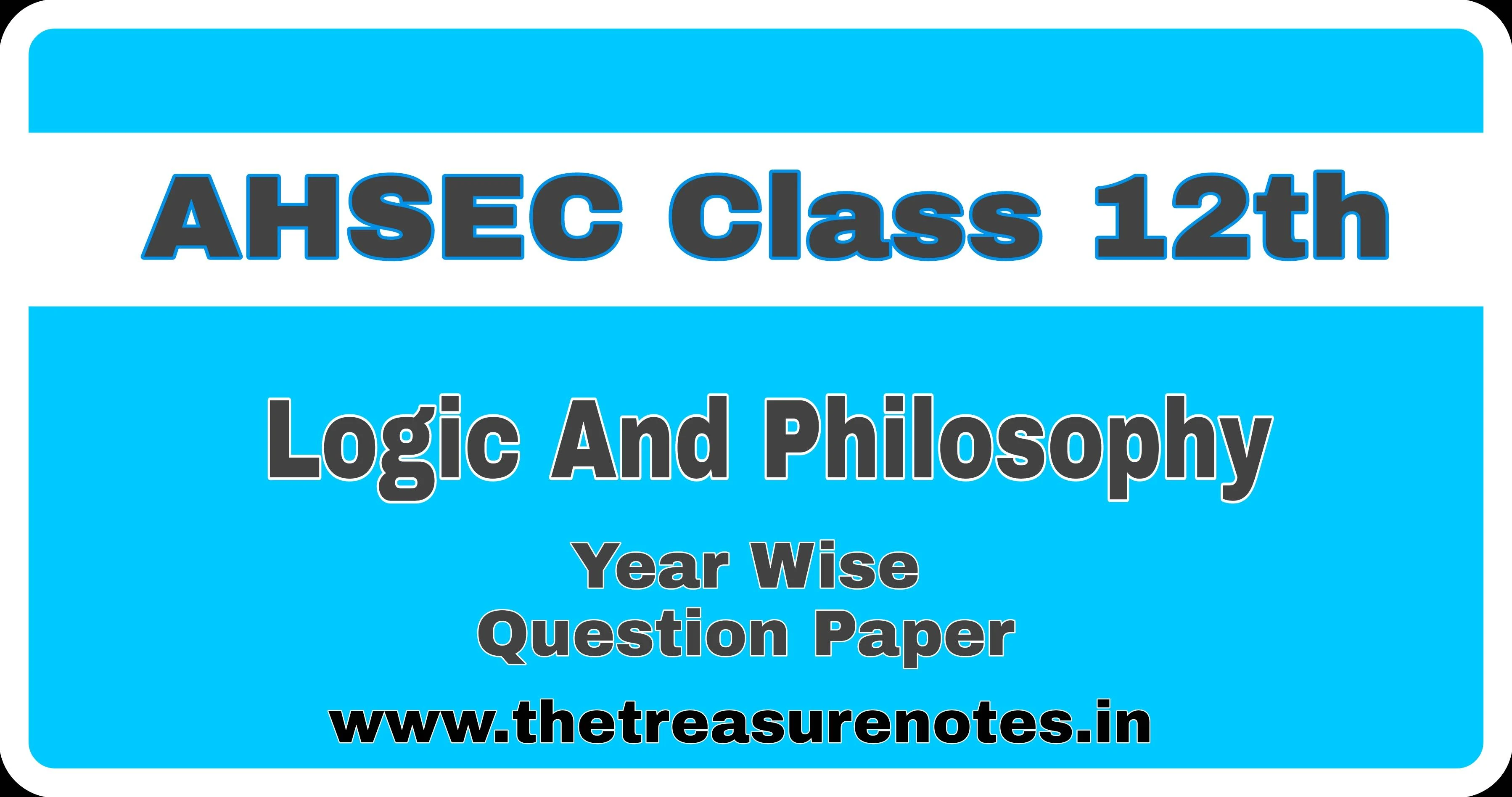AHSEC CLASS 12th Logic And Philosophy Question Paper 2017
Hello Readers, in this Article we Have Shared AHSEC Class 12 Logic and Philosophy Question Paper 2017, Reading Previous Year's Question Papers are very helpful and Important if you want to Score good marks, by Reading Previous Year Question Papers You can easily Judge the difficulty of Questions, and also you can understand the Question Paper Pattern, It is very important to Read AHSEC HS 2nd Year Logic and Philosophy Question Paper 2017.
If you want to know what type of Questions are asked in AHSEC 2017 Logic and Philosophy Examination from Education Different Chapter, Just follow this Article from Top to Bottom, We have attached Logic and Philosophy Question paper '2017 on this page.
AHSEC Class 12 Logic and Philosophy Question Paper Overview:
Name of Board: AHSEC
Subject: Logic and Philosophy
Year: 2017
Class: HS 2nd Year
Type: Text
Official website: ahsec.assam.gov.in
Category: AHSEC Logic and Philosophy Previous Year Question Papers 2017, Class 12 Logic and Philosophy Question Papers 2017.
2017
LOGIC AND PHILOSOPHY
Full Marks: 100
Pass Marks: 30
Time: Three hours
The figures in the margin indicate full marks for the questions.
a) What is the essence of induction proper?
b) Is perfect induction an induction proper?
c) What is the ground of Analogy?
d) “A cause is the sum-total of conditions positive and negative taken together” – Who said the statement?
e) “The law of causation is the material ground of induction” – is it true?
f) What is ‘Vera Causa’?
g) What is the meaning of the Latin word ‘Mores’?
h) Who is the founder of scientific realism?
i) “Observation is finding a fact and experiment is making one” – Who said this?
j) How many Purusarthas are there?
k) Is ethics a positive science?
l) From which Sanskrit root the word ‘Dharma’ is derived?
2. Define scientific induction? 2
3. Explain very briefly why the conclusion of unscientific induction is probable. 2
4. Why observation and experiment are called the material grounds of induction? 2
5. State two advantages of simple observation. 2
AHSEC Class 12 Logic and Philosophy Question Paper 2017
Or
What do you mean by ‘Paradox of Induction’? 2
6. Mention two features of scientific realism. 2
7. Define primary qualities with examples. 2
8. What is the meaning of ‘esse est percipii’? 2
9. Name the form of idealism with which dialectical method is associated. State the name of the philosopher who advocated this method. 2
10. State two features of objective idealism. 2
11. Why is habitual action considered as an object of moral judgement? 2
12. State the second canon of elimination. Name the experimental method which is based on this cannon of elimination. 1+1=2
AHSEC Class 12 Logic and Philosophy Question Paper 2017
Or
State one advantage of the method of Agreement. Why is the method called the method of discovery? 1+1
13. State two points of difference between inductive and deductive inference. 2
14. Explain the meaning of ‘Varnasrama dharma’. 4
15. State Flint’s definition of religion. 4
Or
Mention any four characteristics of religion. 4
16. Mention two practical imperfections of the material of Agreement. 4
17. State two points of similarity between religion and morality. 2+2=4
Or
State four points about the nature of hypothesis. 4
18. Distinguish between good analogy and bad analogy. 4
Or
Distinguish between cause and condition. 4
19. State along with brief explanations about the four conditions of legitimate hypothesis. 4
20. Write short note on the fallacy of post hoc ergo propter hoc. 4
21. Name the theory which states that external world can be known directly as it really is. Also, define this theory and state one important drawback of this theory. 1+2+1=4
22. Write short note on “conflict of desires”.
AHSEC Class 12 Logic and Philosophy Question Paper 2017
4
Or
What is voluntary action? State the three stages of voluntary action. 1+3=4
23. Define Berkeley’s Subjective Idealism. Is Berkeley a solipsist? 2+2=4
24. Define unscientific induction with example. State why is it called ‘Unscientific’? Mention briefly three characteristics of unscientific induction. 2+1+3=6
***

